Refrigeration Before the Refrigerator
Apart from a limited number of people, few Americans understand anything about preserving food. Even fewer actively preserve their own food as a normal part of their lives.
We depend on factories and canneries to do this for us, recognizing the efficiency they gain by preserving large quantities of food. Refrigeration is about the only food preservation technique that the average American uses on a regular basis, and we don’t even think of it in those terms.
It’s hard to determine how far back refrigeration has existed in history, but it was probably discovered purely by accident.
Hunters, or perhaps their wives, noticed that the animals they killed in wintertime didn’t decompose as fast as those they killed in the summer heat. This was a great boon for them and I’m sure they quickly tried to find ways to take advantage of it.
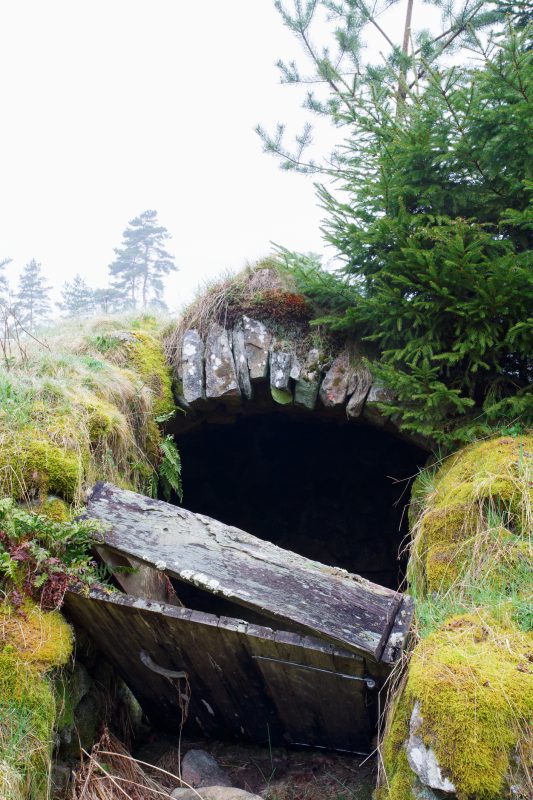
At least as far back as the Middle Ages, using refrigeration to preserve food was normal. Farmers who were fortunate enough to have a cave on their property would use it for storing and prolonging the life of milk, cheese, and other produce.
Those who didn’t have a cave would hang a pitcher in the well to keep their milk below ground, where it was cooler.
This eventually evolved into man-made caves – more commonly known as root cellars. Thus, the root cellar can rightly be called the first man-made refrigerator.
Working well in pretty much any climate, the root cellar relies on the same principle as a cave: that it is always cooler underground.
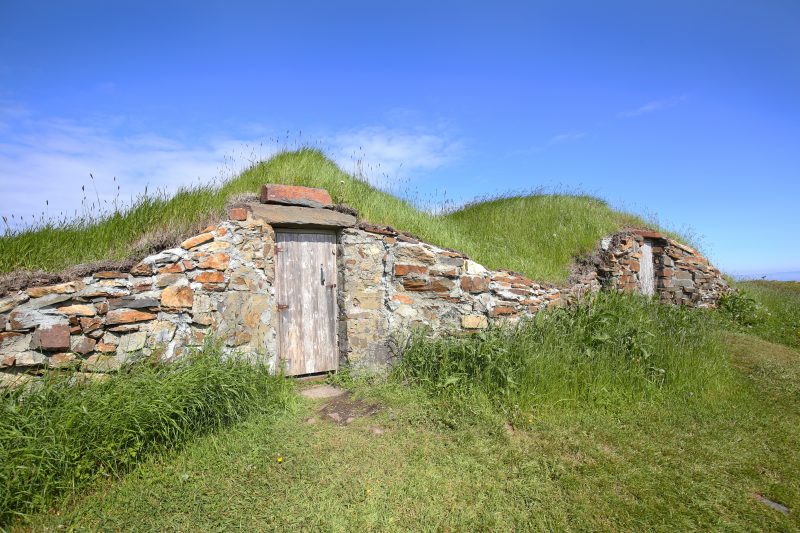
But even though it is cooler underground, it really isn’t cool enough. Refrigeration works as a preservative because it slows the metabolism of bacteria, causing them to eat less and thereby prolonging the life of the food those bacteria would otherwise eat.
Therefore, it stands to reason that the lower the temperature the food is stored at, the better and longer it keeps.
The trick, then, is coming up with a way of making a colder space to store the food in. This was easy in the wintertime when outside temperatures hovered around freezing, but it was difficult indoors.
With more and more people moving off farms and into cities, the option of root cellars was disappearing. Someone needed to come up with a means of creating a cold space to store food within the home.
Introducing the Icebox
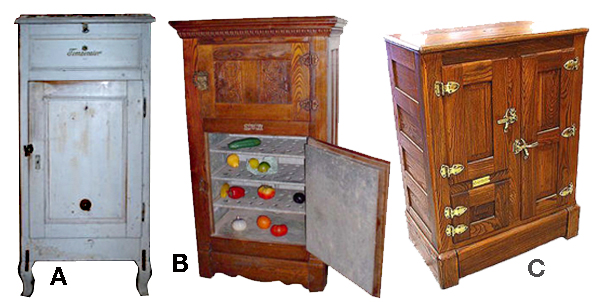
That’s where the icebox came in. An icebox is a cabinet with various compartments open to each other yet insulated to keep out the heat and keep in the cold. One of the compartments is used to hold a block of ice, while the others are left available to store food.
While a number of different designs existed, all iceboxes were essentially the same: depending on ice as the source of cold to keep the food fresh.
They also depended on the laws of thermodynamics. The ice was placed in the upper part of the cabinet so that the cold air would fall and cool the food stored underneath. Manufacturers even provided pictures showing how to store the food for the best possible preservation.
The Iceman
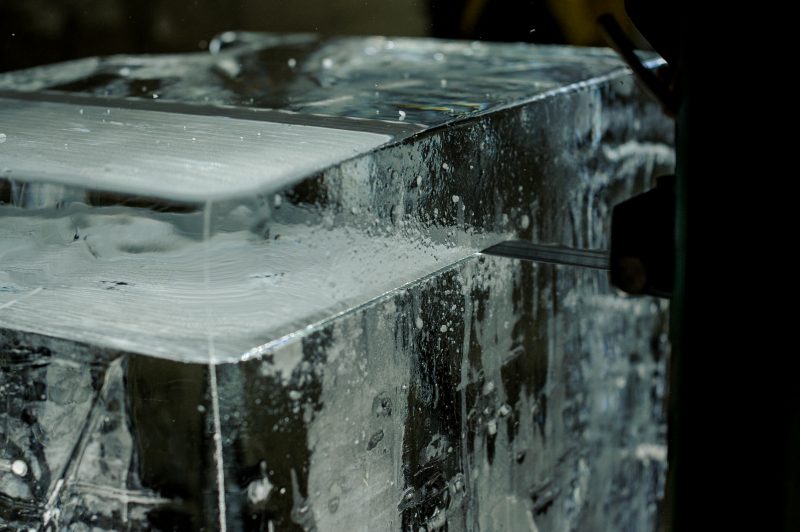
Of course, the icebox needed a regular source of ice as the ice placed in it would melt. Hence, an entire industry was born: ice was collected and stored in the cold winter months so that it could be distributed to homes and stores in the summer.
Anyone who has seen the Disney cartoon Frozen will probably remember the opening scene, where ice men are on the river (or lake?) cutting blocks of ice. These blocks would then be transported to the ice house for storage. This is a fairly accurate representation of what was actually done, even though it was simplified for the movie.
The “iceman” spent his winter months collecting ice and cutting it into blocks for storage. In the warmer months, when that ice was needed, he traveled from door to door selling the blocks to people to keep their food cool. He traveled in a closed, insulated wagon to make the ice last as long as possible.
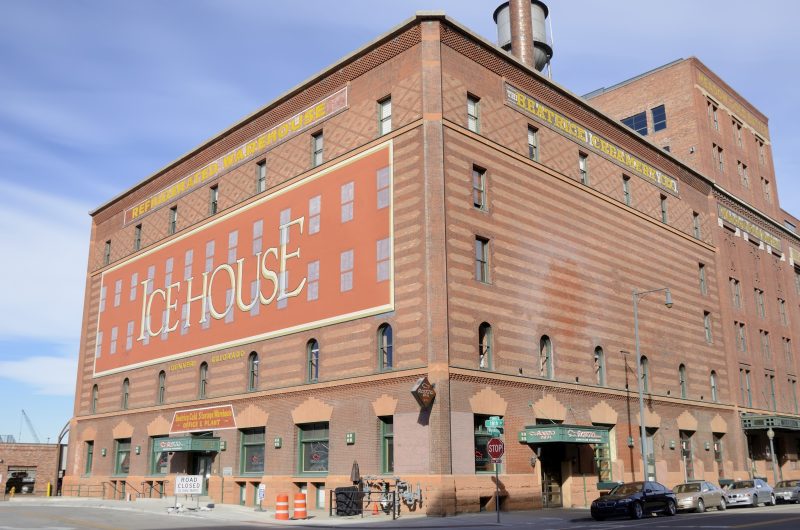
The icehouse was nothing more than a big warehouse, although the best icehouses were underground. Copious amounts of straw were used as insulation to slow melting.
But what really kept the ice from melting was the fact that so much of it was stacked in one place. Even if the outer edges began to melt, the temperature in the inside of the stack would stay a steady 32°F.
This system stayed in effect until about the 1930s, when electric refrigeration became the main method of keeping food cool. For most of a century, the icemen and icehouses made it possible for people to keep their food from spoiling in their homes.
Could We Use This?
Should a truly apocalyptic disaster ever take place, such as an attack by a high-altitude EMP, returning to using iceboxes and icehouses could be the only way of keeping our food cool during the warm summer months. While inconvenient, the use of iceboxes and icehouses is much less inconvenient than losing lots of food due to the lack of electrical power.
The only possible way of making this a reality is as a community project – perhaps by a large survival team or by a town. Either way, it would be considerably more effective if the icehouses could be dug underground.
Icehouses should be located as close as possible to the rivers or lakes where the ice is harvested from, while also keeping them close to the population centers they serve. Time wasted during transport reduces the efficiency of the whole operation.
Of course, the other part that would be necessary to make this a reality would be horses and the wagons they would pull, as gasoline would probably be unavailable. Putting the whole system together would be complex, but what it would save in lost food would result in saved lives.





